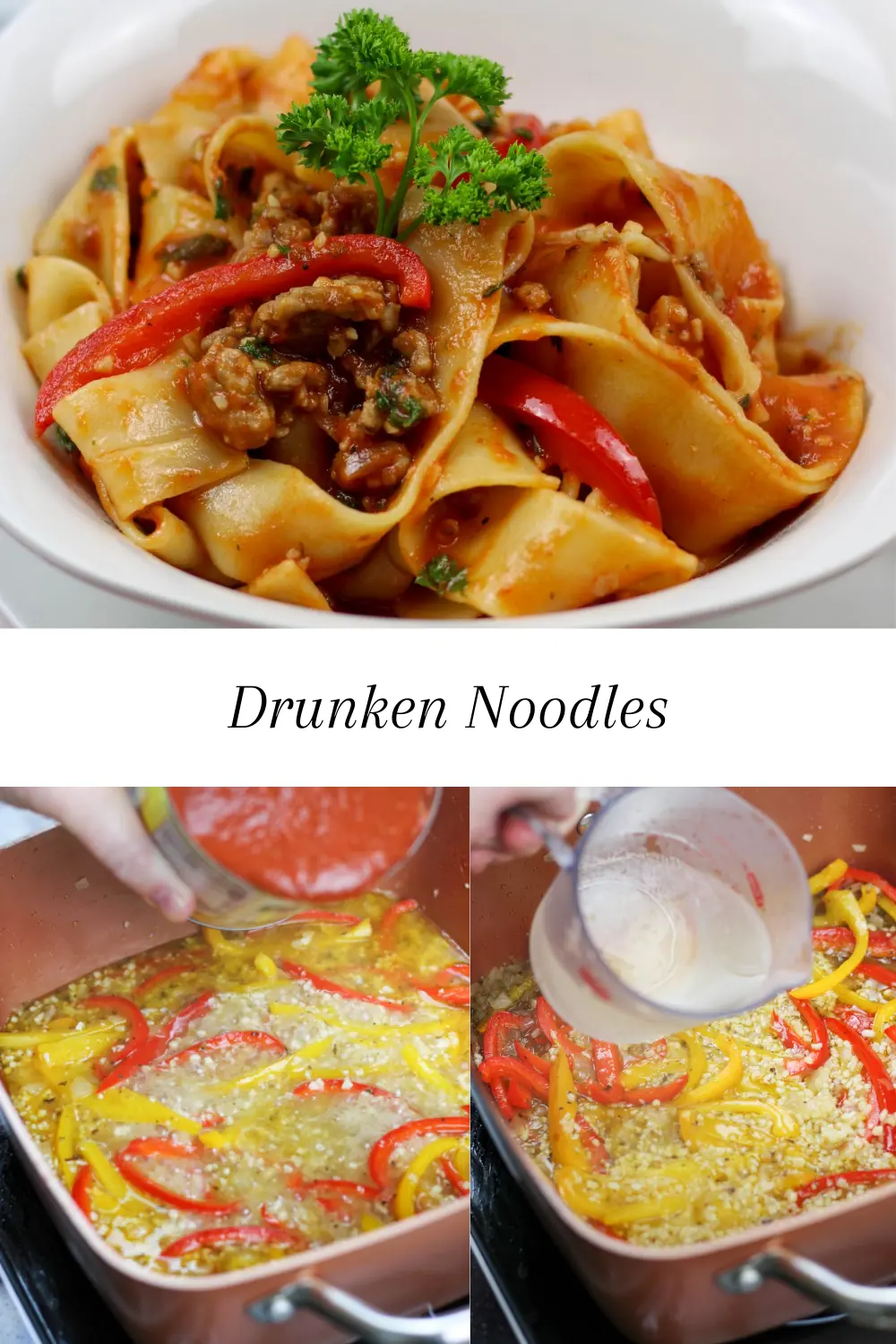Drunken Noodles
Drunken noodles, known as “Pad Kee Mao” in Thailand, have a rich and intriguing history that intertwines cultural significance with culinary evolution. This iconic Thai dish is believed to have originated in the 20th century, although its roots can be traced back to the bold flavors and vibrant ingredients found in traditional Thai cooking. It’s a testament to the dynamic interplay of Thai cuisine, which often incorporates a variety of influences from neighboring regions.
The term “drunken” is commonly thought to refer to the dish’s spicy flavors, which can be invigorating enough to awaken one’s senses, particularly after a night of indulgence. Legend has it that drunken noodles were originally created by chefs who experimented with leftover ingredients, aiming to serve a hearty meal for those returning home late at night. This folklore adds a layer of charm to the dish, encouraging the perception of drunken noodles as comfort food for the weary and hungry.
Ingredients that Make Drunken Noodles Irresistible
Drunken noodles, also known as Pad Kee Mao, is a beloved Thai dish characterized by its savory flavors and distinct ingredients that tantalize the palate. To create an authentic experience, the choice of components plays a pivotal role, enhancing both flavor and texture.
The foundation of drunken noodles lies in wide rice noodles. These noodles absorb the flavors of the sauce and other ingredients, providing a chewy texture that elevates the dish. For those unable to find fresh rice noodles, dry varieties can be used, although they should be soaked adequately prior to cooking to achieve a similar texture.
The Cooking Process
The journey into crafting the perfect drunken noodles begins with the careful selection of ingredients. Fresh vegetables such as bell peppers, carrots, and broccoli are essential, providing not only vibrant colors but also varying textures that enhance the dish. Begin by choosing high-quality rice noodles, which are the foundation of this meal. Soaking them in warm water until they reach a delightful softness is crucial, as it will allow them to absorb the rich flavors of the sauce later on.
As you prepare your cooking space, ensure all your ingredients are within reach. Heat a generous amount of oil in a pan or wok over medium-high heat, allowing the oil to shimmer before adding minced garlic and Thai basil. The combination of these aromatics will fill your kitchen with enticing fragrances, making the cooking process a sensory experience. Once the garlic turns golden, gently toss in your prepped vegetables, stirring them energetically to create a beautiful medley of colors and textures.
Serving and Pairing Suggestions for Drunken Noodles
To truly elevate the dining experience of drunken noodles, careful attention to presentation and complementary pairings is essential. Serving this vibrant dish in a wide, shallow bowl enhances its visual appeal, allowing the colorful ingredients to take center stage. To garnish, consider adding fresh Thai basil and slices of lime, which not only brighten the dish visually but also enhance its flavors. A sprinkle of roasted peanuts adds a delightful crunch and texture, further enriching the experience.
When it comes to accompaniments, consider pairing drunken noodles with light appetizers such as spring rolls or fried tofu, which offer a contrasting texture without overwhelming the palate. A side of fresh cucumber salad can also serve to cleanse the palate between bites, balancing the savory flavors of the noodles. For those seeking heartier options, consider serving grilled chicken or shrimp on the side, allowing diners to customize their plate according to their preferences.
Ingredients
- 8 Ounces of Pappardelle noodles, wide fettuccine noodles work well also.
- 1 pound Spicy Italian Sausage
- 1 medium onion, thinly sliced
- 1 large can crushed tomatoes
- ½ cup white wine
- 1 yellow bell pepper, thinly sliced
- 1 red bell pepper thinly sliced
- 3 cloves freshly minced garlic
- 1 tsp Italian seasoning
- ¼ tsp red pepper flakes
- 3 tsp parsley flakes
- ¼ cup Basil leaves, sliced very thin
- Olive Oil
- Salt and pepper to taste, optional
Instructions
- Cook your choice of pasta according to the package directions.
- When Al Dente’, drain and rinse and set to the side
- In a large skillet, add the Olive Oil and heat on medium heat
- Crumble the Italian Spicy sausage and cooked until thoroughly done
- Once cooked, remove from the pan and set to the side
- If needed, add oil to the pan if there is not enough of the sausage drippings and then add the onion to the pan, add in the italian seasoning, the red and yellow peppers
- Stir in the garlic, add in salt and pepper to taste
- Add the white wine and let simmer and cook down a bit. After a couple of minutes you can add in the tomatoes and the meat can go back into the pan
- Remove from the heat, add in the basiland the parsley
- Add in the drained pasta and use tongs to toss and combine.
- Enjoy!







